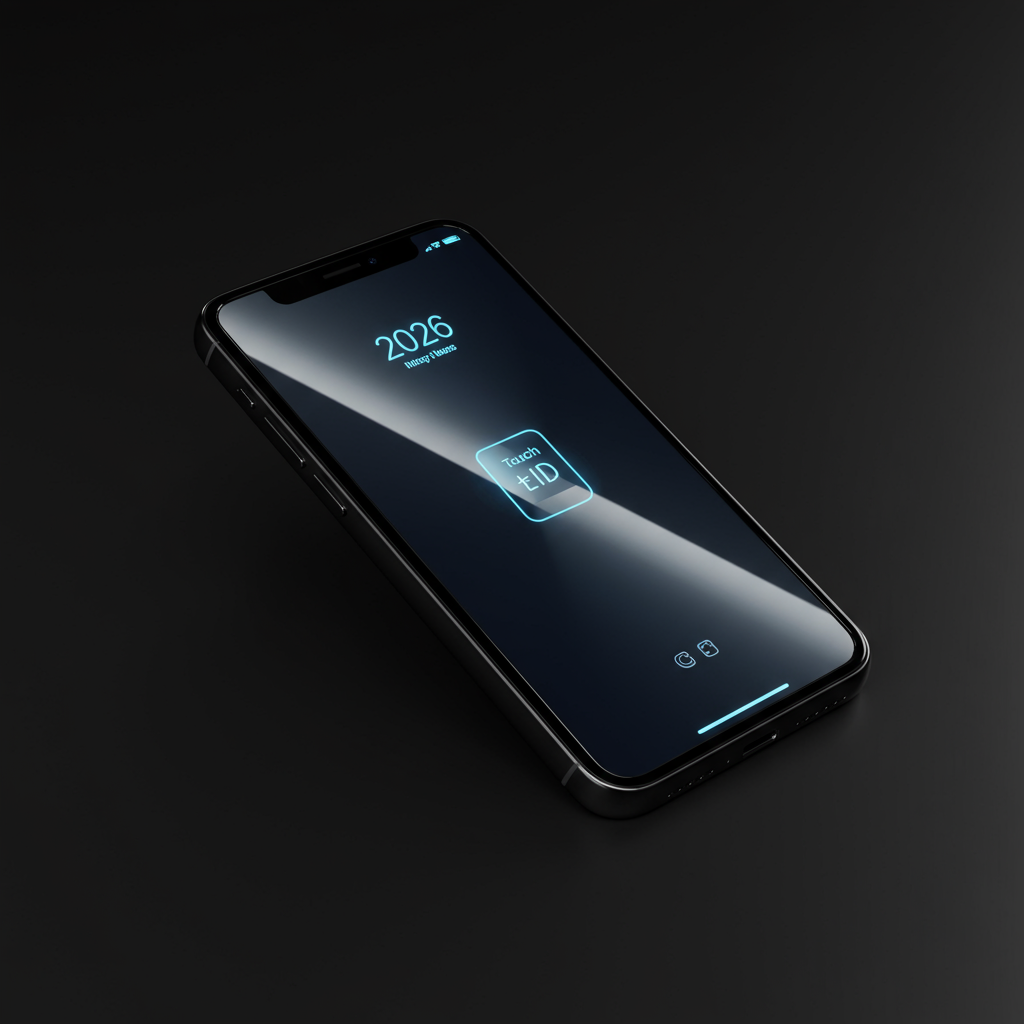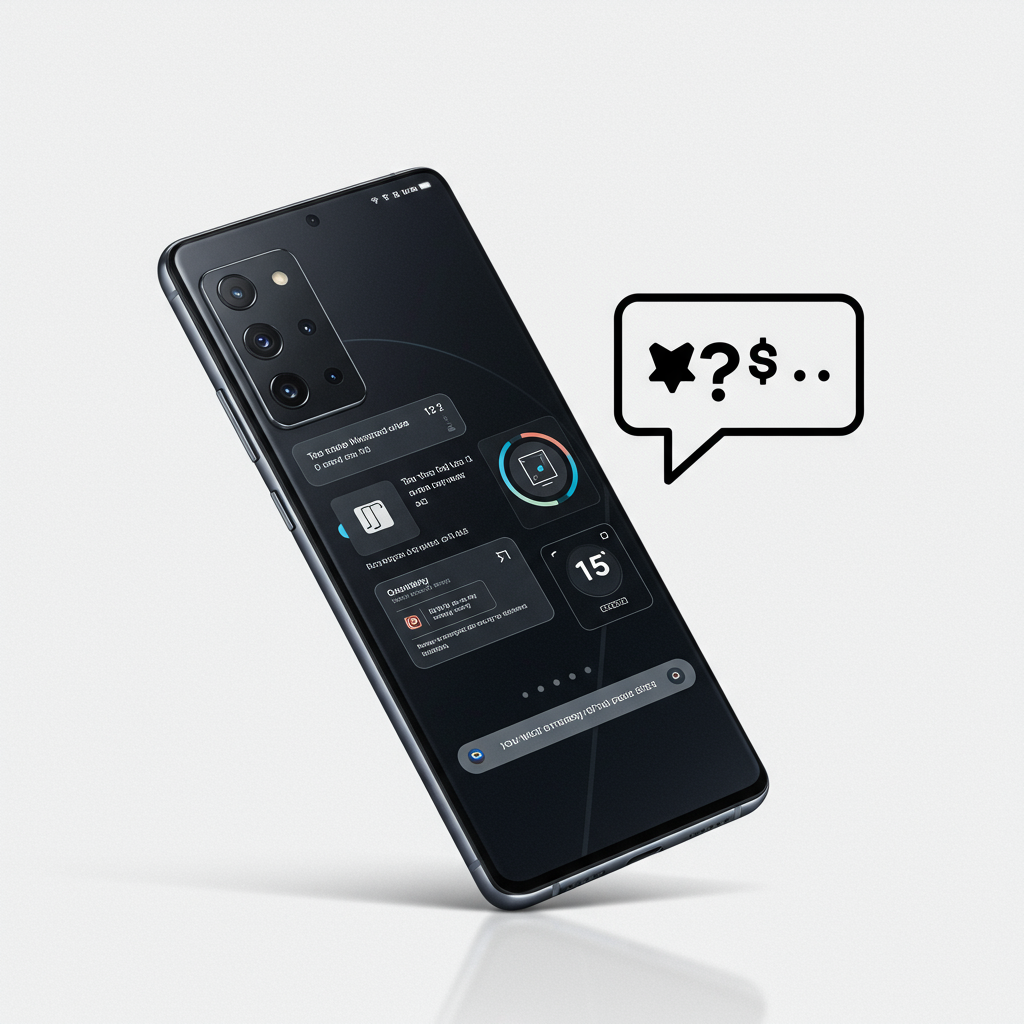The world of mobile technology is buzzing with anticipation as whispers grow louder about Apple’s groundbreaking entry into the foldable smartphone market. Leaks and industry reports suggest that a revolutionary foldable iPhone is on the horizon, slated for a potential 2026 launch. This device promises not only a radical new form factor but also the surprising return of a beloved feature: Touch ID. Get ready to rediscover biometric authentication in a whole new, flexible package. This rumored move signals a significant shift in Apple’s design philosophy, blending nostalgia with cutting-edge innovation.
The Foldable Frontier: Apple’s Calculated Entry
For years, Android manufacturers have showcased their flexible displays, leaving many iPhone users yearning for Apple’s take on the futuristic form factor. Now, the wait seems to be nearing its end. Apple is reportedly embarking on a three-year plan to redefine its iPhone lineup, with the foldable iPhone at its pinnacle, eyeing a launch in late 2026. This carefully planned introduction positions Apple to enter the market with a polished product, potentially avoiding the early pitfalls faced by competitors. Bloomberg reports, further corroborated by analysts like Ming-Chi Kuo, indicate that Apple is meticulously crafting this device to meet its stringent quality standards.
Why Apple is Taking Its Time
Apple’s strategy often involves observing the market, learning from competitors’ trials, and then launching a highly refined product. This approach allows them to address common pain points in foldable phones, such as display creases and durability concerns. The rumored 2026 timeline provides ample time for robust development and testing. This patient strategy aims to ensure that when Apple’s foldable arrives, it delivers a genuinely superior user experience, justifying the premium price point and high expectations.
Touch ID’s Triumphant Return: A Strategic Pivot?
Perhaps the most intriguing rumor surrounding the foldable iPhone is the reintroduction of Touch ID. While Face ID has been the standard for Apple’s flagship devices since the iPhone X, the last iPhone to feature Touch ID was the third-generation iPhone SE. This move marks a notable departure from current trends.
Unpacking Apple’s Reasoning for Touch ID’s Comeback
Why would Apple pivot back to Touch ID for such a forward-looking device? Industry insiders offer several compelling reasons:
Cost Reduction: Integrating Face ID sensors into both the external and internal displays of a foldable device would significantly increase manufacturing costs. Touch ID offers a more economical solution.
Space Optimization: Bloomberg’s Mark Gurman and analyst Ming-Chi Kuo suggest that Touch ID, likely integrated into the power button (similar to some iPad models), helps optimize internal space. This crucial space can then be allocated to other components, such as a larger battery pack, which is vital for power-hungry foldable devices.
Usability in Foldables: A power-button-mounted Touch ID provides convenient authentication whether the device is folded or unfolded. Face ID, conversely, would require two separate sensor arrays for consistent functionality across both states, adding complexity and bulk.
User Preference: Many users still appreciate the tactile feedback and reliability of a physical fingerprint sensor. This “Second Gen Touch ID,” as some reports suggest, could blend security with user familiarity.
This strategic choice mirrors Apple’s past decision to reintroduce MagSafe charging with the iPhone 12. MagSafe, initially a feature of MacBooks, made a successful comeback, demonstrating Apple’s willingness to revive beloved features when they make strategic sense for a new product line.
Engineering a New Fold: Display Innovations and Design
The display technology for a foldable phone is paramount. Reports indicate Apple initially considered “on-cell” touch sensors but has since shifted to an “in-cell” option, consistent with current iPhone models. This technical decision is critical for the device’s aesthetic and functionality.
The Advantage of In-Cell Display Technology
In-cell screens integrate touch sensors directly into the display panel. This results in a thinner screen assembly, which is crucial for minimizing the visible crease common in many foldable devices.
On-cell screens, by contrast, add a separate touch-sensitive layer on top of the display. This creates a thicker product, potentially exacerbating the appearance of the display crease—a significant aesthetic challenge for folding phones.
The pivot to in-cell technology underscores Apple’s commitment to a sleek, refined product. Further, Mashable suggests the device will feature a “creaseless display,” achieved through a “state-of-the-art laser-drilled metal display plate.” If true, this innovation could be a major differentiator, setting Apple’s foldable apart from existing competitors.
A Glimpse at the Foldable’s Form Factor
The rumored design for the foldable iPhone, internally codenamed V68, points towards a horizontal folding mechanism, similar to Samsung’s Galaxy Z Fold series or Google’s Pixel Fold.
When unfolded, the device is expected to offer an expansive 8-inch main display.
In its closed state, a functional 5.5-inch cover display will allow for standard smartphone interactions.
Apple is reportedly targeting an incredibly thin profile, with a closed thickness in the range of 9-9.5 mm. This would make it comparable to or even thinner than devices like the Galaxy Z Fold 7 (8.9 mm) and the Google Pixel Fold.
When unfolded, the device is projected to be approximately 4.5-4.8 mm thick, showcasing Apple’s ambition for a truly svelte design.
These dimensions highlight Apple’s pursuit of a device that is both technologically advanced and aesthetically pleasing, addressing common user complaints about the bulkiness of current foldables.
Beyond the Fold: Cameras, Colors, and Core Specs
Beyond its flexible display and biometric authentication, the rumored foldable iPhone promises a robust set of features designed to appeal to power users.
Quad-Camera System: The device is projected to boast a total of four cameras. This setup would likely include a front-facing camera on the cover display for selfies when closed, two advanced sensors on the rear, and an additional internal camera for video calls and selfies when the device is unfolded, maximizing its versatility.
Color Options: Early reports suggest the foldable iPhone will be available in classic white and black, alongside vibrant light blue and light gold. However, initial testing might be limited to just black and white, indicating a gradual rollout of color choices.
No Physical SIM Slot: In a bold move towards a completely wireless future, the foldable iPhone is expected to ditch the physical SIM card slot, relying solely on eSIM support. While convenient for some, this could be a “slight step back” for users in regions where eSIM adoption is less prevalent.
In-house C2 Modem: This device is also anticipated to feature Apple’s proprietary C2 modem, marking a significant step away from Qualcomm’s cellular modems and granting Apple greater control over its connectivity solutions.
The Road to 2026: What to Expect Before the Fold
Before the highly anticipated foldable iPhone arrives, Apple’s annual iPhone launch event in 2025 is expected to introduce another intriguing device: the iPhone Air.
This ultra-thin model is rumored to feature a single camera and a basic A19 chip. The iPhone Air could be positioned as a simpler, more accessible, yet elegantly designed option within Apple’s lineup. Its introduction might offer early insights into Apple’s evolving design language and broader strategy ahead of the more radical foldable launch. This move could also help manage product overlap if the foldable iPhone launches alongside or even delays the standard iPhone 18 series until 2027.
Anticipated Pricing and Market Positioning
The entry price for Apple’s foldable iPhone is anticipated to be around $1999. This figure positions it squarely against the most premium Android foldables currently on the market, such as the high-end Samsung Galaxy Z Fold models. Given Apple’s long-standing premium market strategy, this price point is unsurprising. The success of the device will heavily depend on its ability to deliver unparalleled value and an experience that justifies this significant investment. Apple will aim to prove that its patient development has resulted in a foldable device that truly stands above the competition.
Frequently Asked Questions
What are the key rumored features of Apple’s foldable iPhone?
Apple’s rumored foldable iPhone, potentially launching in 2026, is expected to bring back Touch ID, likely integrated into the power button, for biometric authentication. It will feature an advanced in-cell display to minimize screen creases and support a horizontal folding design. Other notable rumored features include a quad-camera system, a range of colors (white, black, light blue, light gold), no physical SIM slot (relying on eSIM), and Apple’s in-house C2 modem.
When is Apple’s foldable iPhone expected to be released, and should I wait for it?
The foldable iPhone is currently rumored for a late 2026 launch, with production potentially ramping up in early 2026. If you’re excited by the prospect of a premium, potentially creaseless foldable device with a familiar Touch ID, waiting might be worthwhile. Apple’s history suggests they will deliver a highly polished product. However, if you need a new phone sooner or prefer a traditional form factor, consider current iPhone models or the rumored ultra-thin iPhone Air, expected in 2025.
How might the reintroduction of Touch ID benefit the foldable iPhone’s design and user experience?
The return of Touch ID on the foldable iPhone offers several benefits. Strategically, integrating it into the power button can reduce manufacturing costs and optimize internal space, potentially allowing for a larger battery. From a user experience perspective, Touch ID provides convenient authentication whether the phone is folded or unfolded, avoiding the need for complex dual Face ID sensors. This blend of reliability and cost-effectiveness makes Touch ID a practical and user-friendly choice for Apple’s first foldable device.
Conclusion: A New Era of iPhone Innovation
The rumors surrounding Apple’s first foldable iPhone paint a picture of a meticulously crafted device poised to reshape the premium smartphone landscape. With a rumored 2026 launch, the reintroduction of Touch ID, and an innovative in-cell display designed to minimize creases, Apple appears set to deliver a unique blend of familiarity and future-forward technology. While confirmation remains pending, the sheer volume and detail of these reports from credible sources like Bloomberg and leading analysts suggest a significant, multi-year strategic play by Apple. The next few years promise to be incredibly exciting for iPhone enthusiasts, culminating in what could be the most revolutionary Apple device yet. Stay tuned as more details inevitably emerge on this highly anticipated product.



